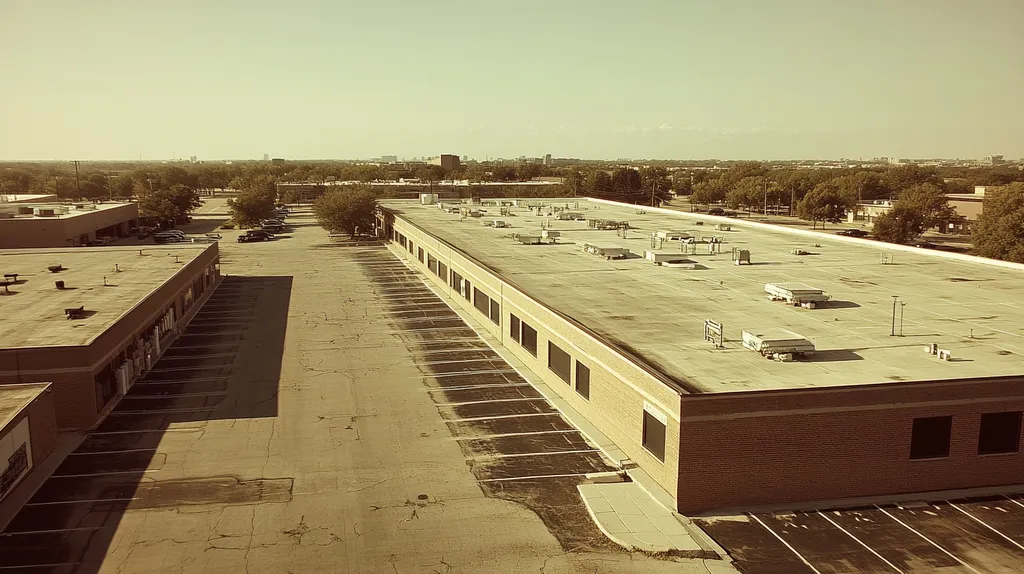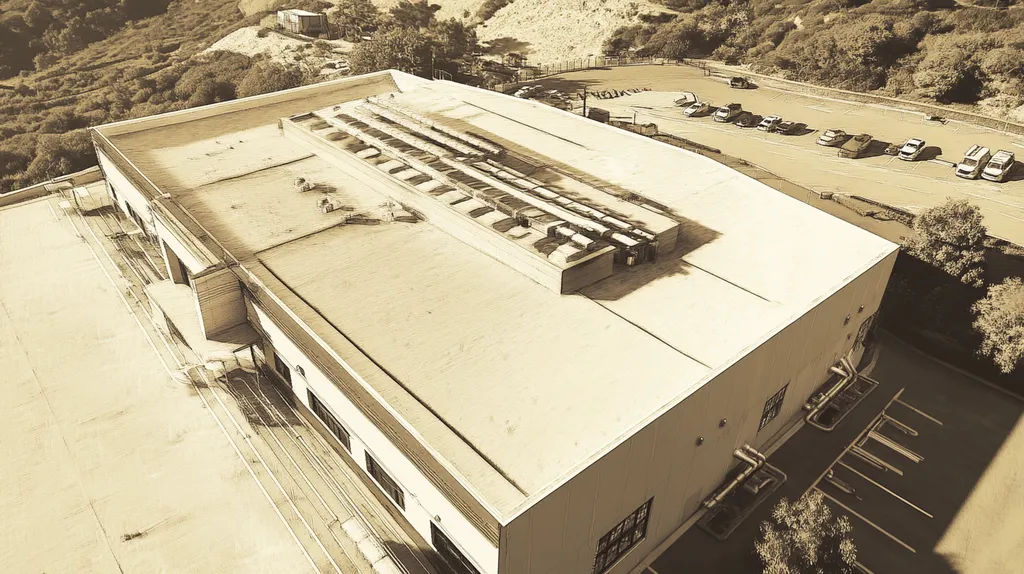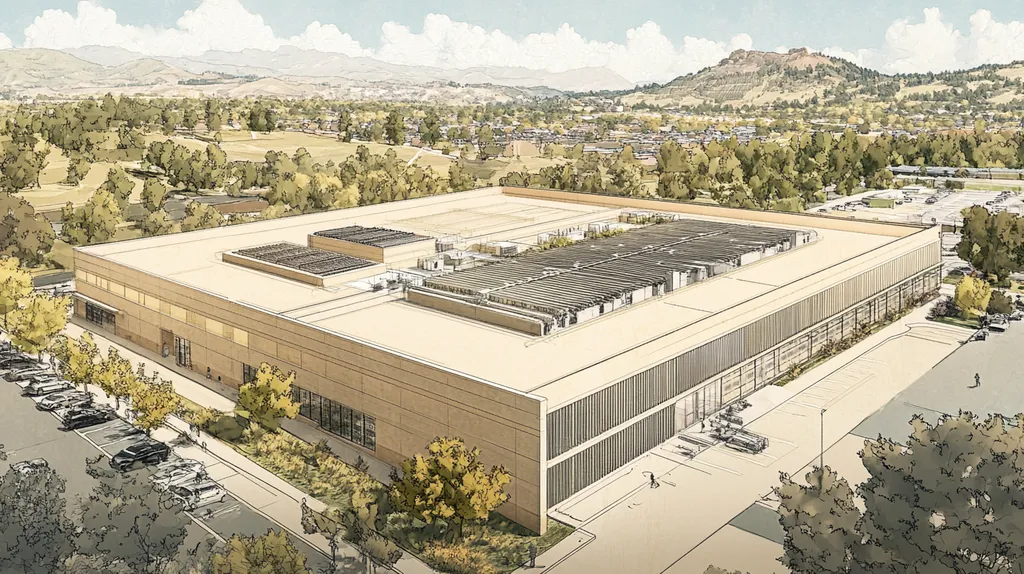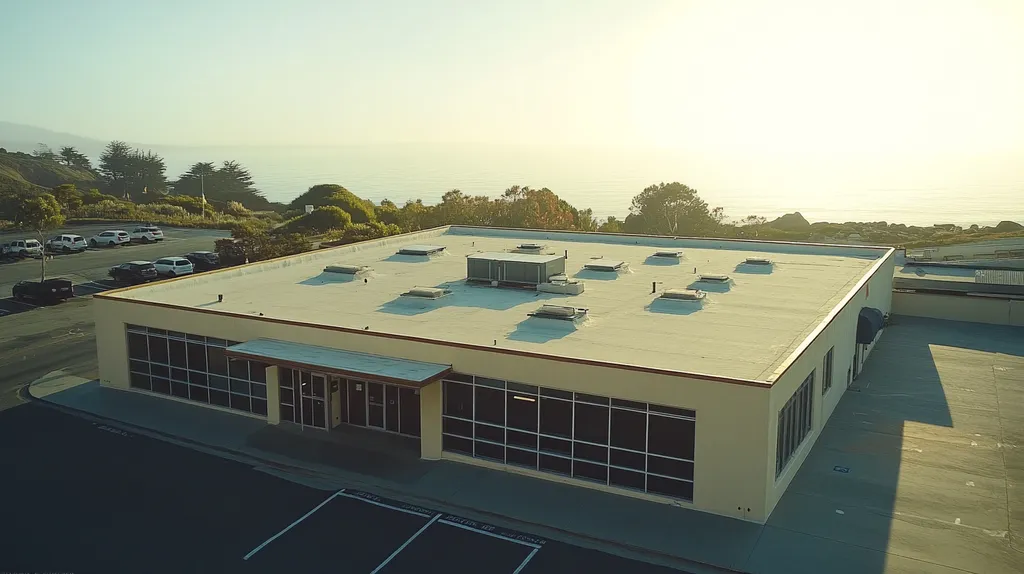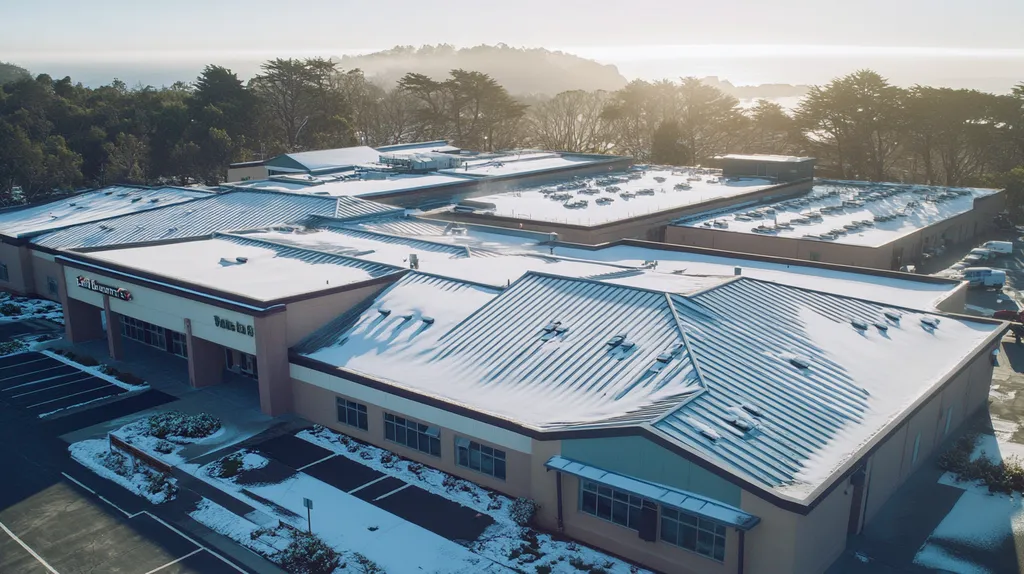Rising energy costs are forcing commercial property owners to confront an uncomfortable truth: traditional roofing choices are bleeding their budgets dry. Studies show that buildings with poor roof reflectivity spend up to 30% more on cooling costs annually.
The solution lies in enhancing roof reflectivity through strategic material selection and maintenance. However, many facility managers lack clear guidance on implementation.
This comprehensive guide provides property owners with actionable steps to optimize roof reflectivity, from material selection to long-term maintenance protocols. By following these guidelines, buildings can achieve significant energy savings while extending roof lifespans.
SECTION 1: PERFORMANCE FACTORS
With rising energy costs, commercial property owners must focus on roofing solutions that significantly reduce energy consumption. A roof’s reflectivity plays a crucial role in determining building energy costs. Research indicates that reflective roofs can decrease cooling energy use by as much as 30% in hot regions. Grasping the performance factors associated with roofing materials is essential for making smart, energy-efficient choices.
Reflective Roof Materials and Their Thermal Properties
The type of roofing material chosen has a direct impact on its reflectivity and thermal efficiency. Reflective roofing systems like TPO (Thermoplastic Olefin) and PVC (Polyvinyl Chloride) are specifically designed to bounce back sunlight, resulting in lower surface temperatures. In contrast, traditional dark roofs can absorb a considerable amount of heat.
Ceramic-coated membranes also stand out for their high solar reflectance capabilities. Opting for the right reflective materials not only enhances energy efficiency but can also extend the roof’s lifespan by reducing heat gain inside the building. Property owners should view these materials as essential tools for achieving energy efficiency.
Incorporating reflective materials benefits both aesthetics and long-term sustainability, optimizing energy performance while creating a more comfortable environment for occupants. As the industry shifts towards greener solutions, these materials are increasingly vital in meeting sustainability goals.
Key Action Items
Assessing Solar Reflectance and Thermal Emissivity Levels
Understanding solar reflectance and thermal emissivity is vital when evaluating roofing systems for energy-saving potential. Solar reflectance gauges how much sunlight a surface reflects, while thermal emissivity measures how well it radiates heat away. High-performance roofs generally exhibit elevated ratings in both categories.
The Cool Roof Rating Council (CRRC) provides valuable resources for measuring these metrics. Roofs with high reflectance and emissivity ratings are adept at keeping buildings cooler, translating to notable energy savings. An analysis highlights that switching to high-reflectance materials can bring substantial reductions in energy expenses.
For example, materials with a solar reflectance rating of 0.70 or higher can dramatically reduce energy costs in warmer climates. Regular assessments of these metrics help ensure roofs perform optimally, allowing building operators to lower dependence on energy-intensive cooling systems.
Key Action Items
Impact of Roof Reflectivity on Building Cooling Loads
Roof reflectivity not only contributes to energy savings but also plays a significant role in reducing building cooling loads. A roof that effectively reflects sunlight decreases the strain on air conditioning systems, which leads to lower energy expenses and enhances occupant comfort.
In commercial buildings, excessive cooling loads can unexpectedly inflate energy bills. Research indicates that a reflective roof can lower peak cooling loads by as much as 20-30%. Implementing reflective roofing solutions is crucial for facilities striving for improved performance and sustainability.
Furthermore, a reflective roof reduces surface temperatures, which can prolong the roof’s service life and minimize repair or replacement needs, ultimately benefiting property owners’ financial health.
Key Action Items
SECTION 2: FINANCIAL CONSIDERATIONS
Investing in reflective roofing systems is a vital financial decision that extends beyond mere aesthetic appeal. With energy costs constituting a large part of operational expenses, selecting an efficient roofing option can lead to significant savings. The U.S. Department of Energy highlights that reflective roofs can decrease cooling costs by up to 20%, emphasizing the importance for property owners and facility managers to assess their choices wisely.
Cost-Benefit Analysis of Reflective Roofing Systems
A thorough cost-benefit analysis is crucial before adopting reflective roofing solutions. Although upfront costs may be higher, the long-term benefits often compensate for these initial investments. Reflective roofs typically have a longer lifespan, minimizing the frequency of replacements and repairs.
Many local governments and utility companies provide incentives for energy-efficient upgrades, offering further financial relief. Property owners should actively seek available rebates to enhance their savings. A comprehensive analysis reveals that reflective systems not only provide economic gains but also serve environmental purposes.
Additionally, these roofing systems elevate tenant satisfaction, as better indoor temperature regulation leads to less reliance on HVAC systems, optimizing energy use and reducing operational costs. By considering both installation and future savings, decision-makers can ensure financial alignment with their long-term goals.
Key Action Items
Energy Savings and Return on Investment Metrics
Understanding energy savings offers a tangible measure of a reflective roofing system’s efficiency. Research indicates that reflective roofs can yield annual energy savings of 15-30%, particularly in hot climates. Facilities with high cooling demands can significantly benefit, as each kilowatt saved directly influences cost reductions.
To calculate return on investment (ROI), facility managers should track energy use before and after installation. By benchmarking utility expenses, they can clearly assess financial impacts and adjust budgets. This data-driven approach provides strong justification for sustaining investments in energy-efficient technologies.
Incorporating financial metrics such as payback period and net present value (NPV) into evaluations helps owners determine the economic feasibility of their decisions, promoting a path towards sustainable profitability. Hence, focusing on energy savings and ROI metrics can guide property owners in justifying the investment in high-performance roofing solutions.
Key Action Items
Budget Planning for Installation and Maintenance Expenses
Effective budget planning for reflective roofing should address both installation and maintenance cost factors. Installation expenses can vary based on roof size and complexity, so a comprehensive assessment that accounts for site evaluations, material choices, and labor is essential to avoid unexpected expenditures.
Maintenance costs, although typically lower for reflective roofs, should also be included in long-term financial strategies. Regular inspections are key to ensuring optimal performance and identifying issues before they escalate into costly repairs.
Future upgrades in reflectivity-enhancing technologies must also be budgeted. As energy codes and standards evolve, property owners who adapt proactively will minimize compliance expenses and secure financial benefits. A robust budget that encompasses installation and ongoing maintenance is vital for a successful transition to energy-efficient roofing solutions.
Key Action Items
SECTION 3: COMPLIANCE REQUIREMENTS
With increasing energy costs and a growing emphasis on sustainability, compliance with building codes and energy standards is essential for commercial roofing. Inefficient roof reflectivity can lead to heightened energy consumption, raising both operational expenses and environmental impact. Stakeholders must stay informed about regulatory requirements and certifications to ensure their roofs contribute effectively to energy efficiency goals. This section outlines the crucial compliance factors necessary for achieving high-performance roofing systems.
Relevant Building Codes and Energy Standards (IECC, ASHRAE)
Building codes such as the International Energy Conservation Code (IECC) and the standards set forth by the American Society of Heating, Refrigerating and Air-Conditioning Engineers (ASHRAE) establish fundamental guidelines for energy efficiency in roofing. These codes specify required reflectivity levels to minimize heat absorption, ultimately benefiting both energy bills and building sustainability.
For instance, the IECC outlines specific solar reflectance requirements for roofs in warmer climates, significantly lowering cooling energy demands. Facilities managers must be aware of amendments to these regulations that impact roof systems to ensure compliance.
Utilizing roofing materials that meet or exceed ASHRAE criteria can lead to substantial energy savings. As these standards evolve, staying updated is crucial for property owners aiming to enhance their energy efficiency.
Key Action Items
Certification and Labeling for Reflective Roofing Products
Certification labels are essential in helping property owners identify compliant reflective roofing products. Organizations like the Cool Roof Rating Council (CRRC) provide reliable ratings for roofing materials based on their solar reflectance and thermal emittance. This ensures property owners select materials that not only comply with regulations but also perform effectively.
For example, roofing with a high Solar Reflectance Index (SRI) can significantly reduce heat retention, leading to lower operational costs. Choosing certified roofing materials contributes to meeting sustainability goals.
Additionally, local jurisdictions often offer incentives for using certified reflective products. Understanding these incentives will enable facilities managers to maximize their roofing investments while ensuring compliance.
Key Action Items
Documentation and Verification for Regulatory Compliance
Maintaining thorough documentation and verification processes is vital for meeting compliance requirements. Every roofing project should include accurate records that show how materials and installation practices conform to local codes and standards. This documentation should encompass details such as the Solar Reflectance Index (SRI) of roofing materials and any relevant certifications.
Conducting routine inspections throughout and after the roofing installation ensures compliance and allows for early identification of potential issues. This proactive strategy can prevent compliance violations and minimize long-term costs associated with energy inefficiency.
Furthermore, maintaining comprehensive records can support future renovations or upgrades, providing a clear compliance history for new projects. Engaging third-party auditors can solidify compliance and provide added assurance with regulatory matters.
Key Action Items
SECTION 4: RISK MANAGEMENT
As energy efficiency becomes increasingly vital for commercial buildings, the risks associated with reflective roof degradation can significantly affect operational costs. Studies show that inadequately maintained roofs can lead to a staggering 30% increase in energy expenses due to temperature fluctuations and structural issues. Maintaining roof reflectivity is essential not only for reducing these costs but also for prolonging the roof’s lifespan. This section will delve into the risks associated with reflectivity, potential heat-related damages, and strategies to control moisture and UV exposure.
Identifying Risks Related to Reflective Roof Degradation
The consequences of reflective roof degradation can be serious for property owners. A drop in reflectivity often leads to inefficiencies in heating and cooling systems, thus increasing energy usage and costs. For example, commercial buildings with reduced reflective capabilities can experience significantly higher utility bills during peak seasons.
Furthermore, reflective materials that degrade may shorten a roof’s overall lifespan, leading to expensive repairs and replacements that could have been avoided with proper upkeep. Roofs that fail to effectively reflect sunlight absorb excessive heat, placing added strain on HVAC systems and inflating operational expenses.
Regular inspections play a crucial role in detecting early signs of degradation. By identifying issues such as discoloration, blistering, or cracking before they worsen, property managers can prevent costly long-term consequences. Prioritizing reflectivity maintenance not only conserves energy but also safeguards the property’s integrity and value.
Key Action Items
Mitigating Heat-Related Structural and Material Damage
Heat-related damage presents a significant risk for reflective roofs. Elevated temperatures can cause thermal expansion, leading joints and seams to crack. This structural failure introduces moisture into the inner layers of the roof, resulting in extensive damage over time.
Additionally, materials like thermoplastic polyolefin (TPO) may deteriorate with excessive heat exposure. Without proactive management, such degradation can require expensive early replacements. Applying heat-reflective coatings enhances a roof’s ability to repel sunlight, helping mitigate these risks.
Implementing a routine maintenance schedule is essential in preventing heat-related damage. Regular cleaning and thorough inspections of roofing materials extend their functional lifespan while preserving reflectivity. Timing these maintenance activities with seasonal changes can further optimize energy performance year-round.
Key Action Items
Controlling Moisture and UV Exposure Impacts
Moisture and UV exposure can critically damage reflective roofing materials, leading to costly repairs and decreased energy efficiency. Ultraviolet rays may break down roofing components, while moisture promotes mold growth that undermines structural integrity and occupant health.
Implementing a robust drainage system is crucial for mitigating moisture-related challenges. Proper drainage prevents water from pooling, which can erode roofing materials and diminish reflectivity. Furthermore, applying UV-resistant coatings serves as a safeguard against sun-induced damage.
Regular inspections should focus on moisture control and the integrity of UV protective layers. Property owners should also identify areas where vegetation might retain moisture. Maintaining a clear roof perimeter can greatly improve drainage effectiveness and overall roof performance.
Key Action Items
SECTION 5: OPERATIONAL PROCEDURES
Roof reflectivity is more than just a design choice; it has a direct impact on energy costs and overall building efficiency. Research indicates that reflective roofs can lower cooling costs by up to 30%. As energy prices rise and sustainability regulations become stricter, it is essential to actively maintain and enhance roof reflectivity. This section outlines critical operational procedures to ensure roofs perform at their highest energy efficiency.
Routine Inspection Protocols for Reflective Roof Performance
Establishing a regular inspection schedule is crucial for preserving roof reflectivity. Inspections should occur at least biannually and after severe weather incidents. Inspectors need to check for surface damage like cracks or punctures, which can trap dirt and debris, thereby reducing reflectivity.
Using infrared thermography during inspections can pinpoint areas of heat retention. These heat spots often indicate reduced reflectivity and potential underlying problems. Addressing such issues promptly can save on future repair costs.
Documentation during inspections is vital. Maintaining a detailed log helps property managers track changes in the roof’s condition over time. This historical data is beneficial for informing maintenance and investment decisions.
Key Action Items
Maintenance and Cleaning Practices for Reflectivity Retention
Regular cleaning is essential for maintaining a commercial roof’s reflectivity. Accumulation of dirt, algae, and debris can severely hinder its ability to reflect sunlight. A professional cleaning service is recommended at least once a year, particularly for low-slope roofs.
Using environmentally friendly cleaning solutions is advisable, as harsh chemicals can damage roofing materials. Soft washing methods, which involve low-pressure water and biodegradable detergents, are effective without causing harm.
Additionally, immediate attention to drainage system blockages is crucial. Standing water can lead to mold growth and accelerate deterioration. Regularly checking gutters and downspouts will help ensure effective drainage.
Key Action Items
Tracking Energy Use and Performance Over Time
Tracking energy use is critical for verifying that improved roof reflectivity leads to actual savings. Property owners should implement energy monitoring systems that collect data on energy consumption trends to assess how roofing performance affects overall energy usage.
Creating a baseline energy consumption figure before making roofing changes is essential. This baseline facilitates effective comparisons after implementing reflective roofing solutions. Over time, this data can highlight the financial benefits of maintaining roof reflectivity.
Regularly reviewing utility bills assists in understanding energy cost patterns and can reveal issues that require inspection. Significant spikes in energy usage may indicate problems with roof performance that need immediate attention.
Key Action Items
SECTION 5: OPERATIONAL PROCEDURES
Roof reflectivity is far more than a cosmetic enhancement; it plays a critical role in managing energy costs and optimizing building efficiency. Research shows that reflective roofs can reduce cooling costs by as much as 30%. As energy prices rise and sustainability mandates tighten, it becomes imperative to actively maintain and improve roof reflectivity. This section presents vital operational procedures designed to maximize the energy performance of roofing systems.
Routine Inspection Protocols for Reflective Roof Performance
Establishing a systematic inspection schedule is crucial for upholding roof reflectivity. Inspections should occur at least biannually and following severe weather events. Inspectors need to be vigilant for surface damages, such as cracks or punctures, that can trap dirt and debris, thereby decreasing reflectivity.
Incorporating infrared thermography during inspections can help detect areas with excessive heat retention. These hotspots often indicate reduced reflectivity or other underlying issues. Promptly addressing these problems can prevent further deterioration and associated repair costs.
Accurate documentation during inspections is essential. Keeping a detailed log enables property managers to monitor changes in the roof’s condition over time, providing valuable insights for maintenance and future investment decisions.
Key Action Items
Maintenance and Cleaning Practices for Reflectivity Retention
Regular cleaning is essential for maintaining a commercial roof’s reflectivity. Accumulation of dirt, algae, and debris can significantly hinder its ability to reflect sunlight. It is advisable to employ a professional cleaning service at least once a year, particularly for low-slope roofs.
Using environmentally friendly cleaning solutions is crucial, as harsh chemicals may damage roofing materials. Soft washing techniques—utilizing low-pressure water and biodegradable detergents—efficiently remove contaminants without causing harm.
Additionally, immediate attention should be paid to blockages in drainage systems. Standing water can lead to mold growth and hasten deterioration. Regular checks of gutters and downspouts are essential for maintaining effective drainage.
Finally, establishing a routine for evaluating roof performance after cleaning can help determine the effectiveness of maintenance efforts, allowing property managers to adjust cleaning schedules based on observed performance changes.
Key Action Items
Tracking Energy Use and Performance Over Time
Tracking energy usage is essential for verifying that improved roof reflectivity results in tangible savings. Property owners should implement energy monitoring systems to gather data on consumption trends, helping to assess how roofing performance impacts overall energy usage.
Establishing a baseline for energy consumption before roofing changes is important. This benchmark allows for effective comparisons and evaluation after installing reflective roof solutions. Over time, this data can highlight the financial advantages of maintaining roof reflectivity.
Regularly reviewing utility bills can provide insights into energy costs and reveal patterns that may require inspection. Notably, significant spikes in energy usage may indicate roof performance issues that need immediate investigation.
Collaborating with energy management professionals can enhance tracking efforts. They can assist in formulating tailored energy reduction goals based on thorough performance analytics.
Key Action Items
The Bottom Line
With energy costs rising 5-7% annually, commercial property owners can no longer afford to overlook roof reflectivity as a critical factor in building performance.
Studies consistently show that buildings implementing comprehensive reflective roofing solutions reduce cooling costs by 20-30% while extending roof lifespans by up to 10 years.
The data clearly demonstrates that proper material selection, rigorous maintenance protocols, and regular performance monitoring form the foundation of an effective reflective roofing strategy.
Property owners who fail to optimize roof reflectivity face escalating energy bills, increased repair costs, and potential regulatory compliance issues in an evolving environmental landscape.
The time for implementing these proven reflective roofing practices is now – before rising temperatures and stricter energy codes make action more costly and complex.
FREQUENTLY ASKED QUESTIONS
Q. What performance factors should I consider for my commercial roof?
A. Focus on roofing materials that enhance reflectivity and thermal efficiency. Materials like TPO and PVC are great choices that can help reduce energy costs significantly. Remember that high-quality reflective materials not only improve performance but also support long-term sustainability goals.
Q. How can a reflective industrial roof improve financial performance?
A. A reflective roof can lead to decreased cooling costs and enhance tenant satisfaction. Long-term savings from reduced energy expenses often outweigh the initial investment costs. Be sure to analyze available incentives and rebates to maximize financial benefits from energy-efficient upgrades.
Q. What compliance requirements apply to my commercial roof?
A. Be aware of building codes like the IECC and ASHRAE standards that mandate minimum reflectivity levels. Ensuring that your roofing materials meet these regulations is crucial for compliance and sustainability. Regular updates on any changes to these standards are key for ongoing compliance.
Q. How can I manage risks associated with reflective roof degradation?
A. Schedule regular inspections to identify signs of roof degradation. Prompt attention to issues like discoloration or cracking allows you to mitigate energy cost increases associated with poor reflectivity. A proactive maintenance plan is essential for protecting roof longevity and performance.
Q. What operational procedures should I implement for my commercial roof?
A. Establish a routine inspection schedule, ideally biannually, to assess the roof’s condition. Regular cleaning practices and monitoring energy usage will ensure that you maintain the roof’s reflectivity and optimize energy performance over time, leading to potential cost savings.
Q. How does roof slope affect the reflectivity of a commercial roof?
A. Roof slope influences how sunlight hits the surface, affecting reflectivity. Steeper roofs typically shed water better, but low-slope roofs may require more frequent maintenance. Proper design and material selection should account for slope to maximize reflectivity and energy efficiency.
Q. How often should I perform maintenance on my industrial roof?
A. It’s advisable to conduct maintenance at least twice a year, especially after severe weather. Regular cleaning and prompt inspections can prevent long-term damage and enhance reflectivity, ultimately saving on energy costs. Keep records to monitor performance over time.

